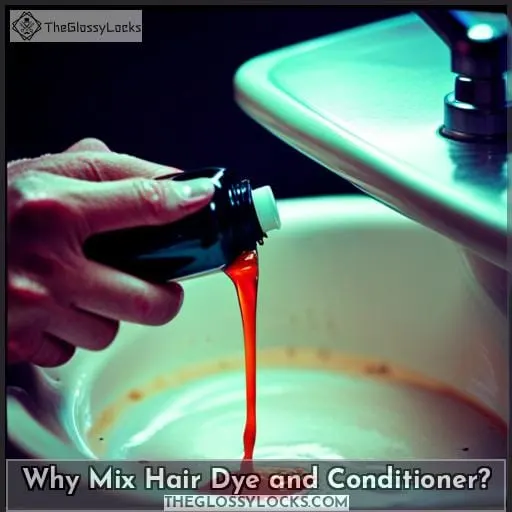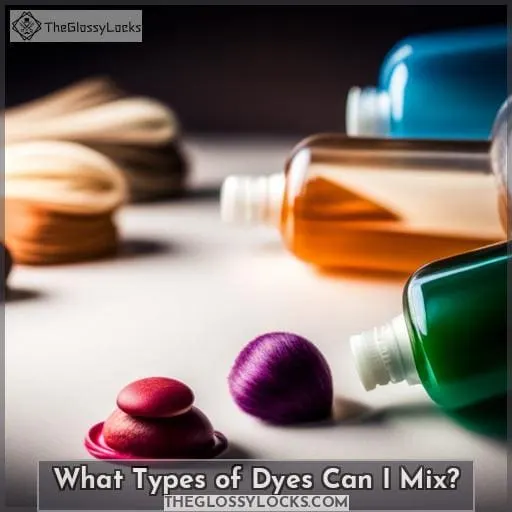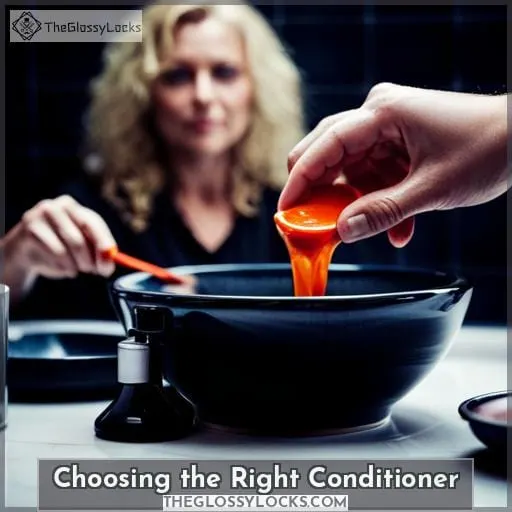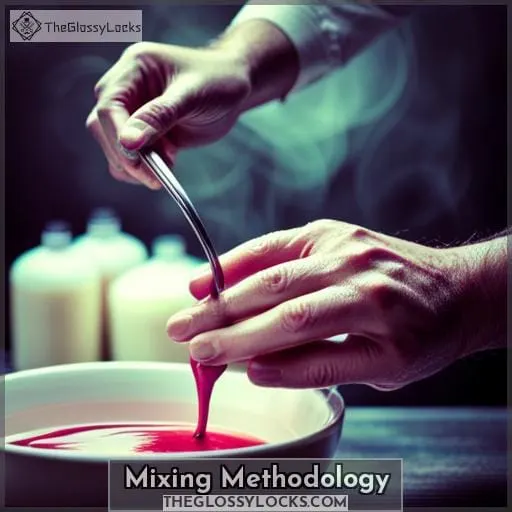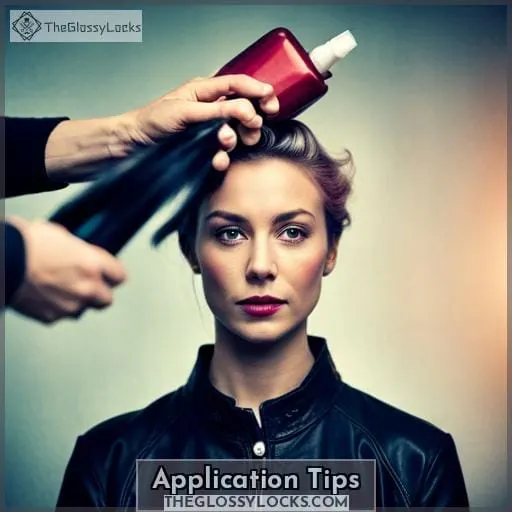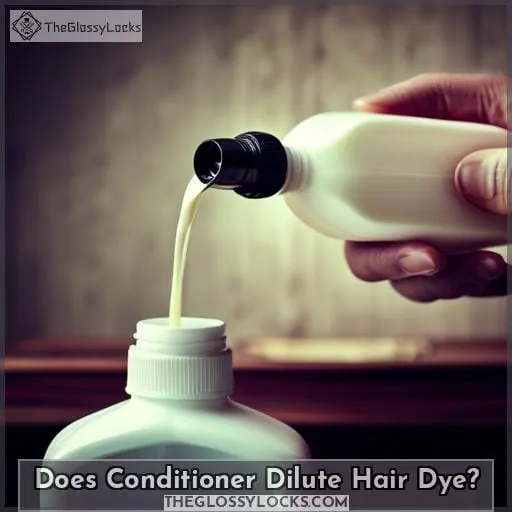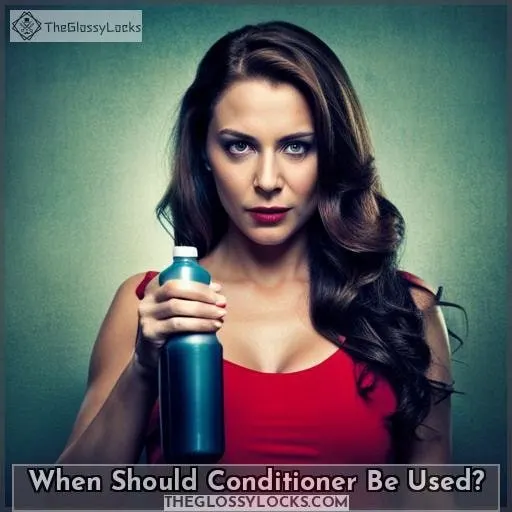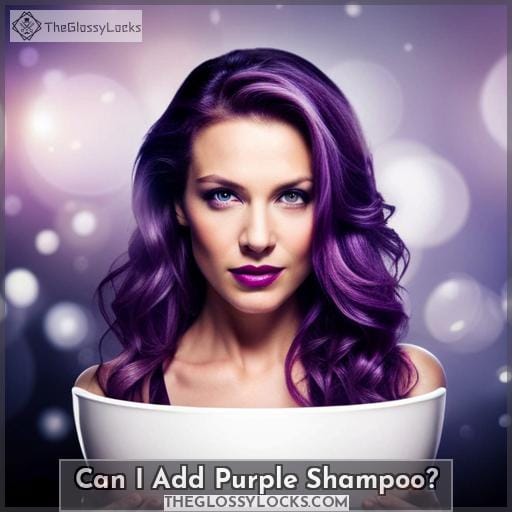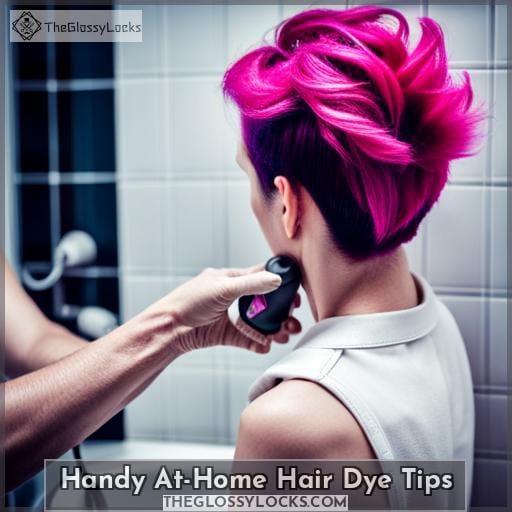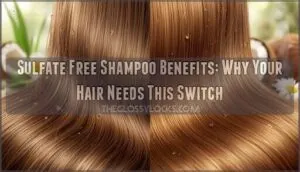This site is supported by our readers. We may earn a commission, at no cost to you, if you purchase through links.

We’ll explore can I mix hair dye with conditioner without causing chaos on your head.
Table Of Contents
- Key Takeaways
- Why Mix Hair Dye and Conditioner?
- What Types of Dyes Can I Mix?
- Choosing the Right Conditioner
- Mixing Methodology
- Application Tips
- Does Conditioner Dilute Hair Dye?
- When Should Conditioner Be Used?
- Can I Add Purple Shampoo?
- Handy At-Home Hair Dye Tips
- Frequently Asked Questions (FAQs)
- Are there any specific hair dye brands that work best with conditioner mixing for vibrant shades?
- How long should one wait after a professional treatment before incorporating a conditioner-dye mixture?
- Is there a recommended frequency for using conditioner-mixed dye for maintaining color vibrancy?
- Can the use of conditioner in the dye mixture affect the hair’s porosity over time?
- Are there any special precautions or considerations when using conditioner-dye mix on different hair textures or densities?
- Conclusion
Key Takeaways
- Choose compatible products.
- Use the correct mixing method.
- Apply the conditioner-dye mixture to your hair.
- Rinse the conditioner-dye mixture out of your hair.
Why Mix Hair Dye and Conditioner?
Combining your hair dye with conditioner allows you’re achieving subtle, natural-looking hair color results while providing needed moisture. Diluting the dye with conditioner can help you better manage porosity and moisture levels in color-treated hair.
As conditioner may interact with developer chemicals and hinder permanent dye reactions, focus on semi-permanent, deposit-only options. Conditioner mixing enables customization of fun, fantasy shades for temporary self-expression.
While permanent dyes depend on exact developer ratios, directly pigmented colors invite creativity.
Gradual color maintenance combines direct dye and conditioner for occasional touch-ups. This maintains moisture without extremes of permanent re-coloring. Still research application tips and conduct strand tests for your custom concoction.
With the right conditioner base and dye combo, creative experiments can enhance your color journey.
What Types of Dyes Can I Mix?
To achieve optimal results when mixing hair dye with conditioner, you should be mindful of the types of dyes you choose to blend.
Color compatibility is crucial, and it’s advisable to stick to semi-permanent options, especially direct dyes like Pulp Riot or Manic Panic. These dyes, being conditioner-based, not only provide vibrant pigment but also offer moisture for healthier-looking hair.
When creating custom shades, consider adjusting dye-conditioner ratios for varied color intensities or opting for pastel tones by increasing the conditioner ratio. Porosity considerations are essential, especially for achieving vibrant pastels on lightened hair.
Embrace these custom shade techniques to express your individuality while maintaining the health and vibrancy of your locks.
Choosing the Right Conditioner
When venturing into the realm of mixing hair dye with conditioner, the importance of choosing the right conditioner can’t be overstated. Compatible conditioners matter significantly in this process. Ensuring that the conditioner is suitable for mixing with your chosen dye is crucial for achieving the desired results.
Consider the chemistry of the conditioner and its compatibility with the specific hair dye you’ve selected, as this will play a pivotal role in enhancing and maintaining the color of your hair.
Compatible Conditioners Matter
Choose conditioner compatibility wisely to maximize the benefits of mixing with hair dye for optimal color results.
The right conditioner ensures a moisture balance that enhances color vibrancy.
Consider pH levels, as they impact dye performance.
Ideal conditioners complement the dye’s chemistry, preventing interference.
When mixed correctly, they contribute to long-lasting color maintenance and address porosity concerns.
Your choice of conditioner is a crucial factor in achieving the desired results during the hair dyeing process.
Choosing Carrier Compatibility
Select a conditioner that aligns with your hair dye goals; the right choice can significantly impact the success of your color experiment.
Consider pH levels for optimal color retention.
Ensure your conditioner maintains a moisture balance, especially if you have porous hair.
The selected conditioner plays a crucial role in achieving color accuracy during the mixing process, affecting both application and subsequent color maintenance.
Prioritize protective measures by choosing a conditioner that complements your desired dye outcome.
Conditioner Chemistry Concerns
Ensure your hair dye and conditioner concoction achieves optimal results by scrutinizing the chemistry of your chosen conditioner; compatibility matters more than you might think.
Consider pH considerations, as the acidity of some conditioners may hinder chemical reactions crucial for certain dyes.
Be wary of potential porosity effects and choose a conditioner that complements your dye to avoid unwanted dilution.
Smart conditioner selection is the key to vibrant, long-lasting color maintenance.
Mixing Methodology
When it comes to mixing hair dye with conditioner, there are two main methods you can use: full application and gradual color maintenance.
The full application method involves mixing the dye and conditioner together in a bowl before applying it all over your hair for a custom color result.
On the other hand, the gradual color maintenance method involves adding a small amount of hair dye to your regular bottle of conditioner for touch-ups and maintaining your desired shade over time.
Full Dye Application
Mixing hair dye with conditioner becomes an artful process when considering the full dye application, allowing you to tailor your color to perfection.
- Strand Testing: Begin by testing a small strand for desired results.
- Color Customization: Achieve personalized shades by adjusting dye and conditioner ratios.
- Porosity Concerns: Address hair porosity issues with customized treatments.
- Mixing Ratios: Follow a precise 1:3 ratio for optimal color consistency.
Gradual Color Maintenance
Gradual color maintenance utilizes conditioner to preserve and adjust your hair color subtly. It’s ideal for extending vibrant hues or toning down intense shades. Mixing direct dyes with conditioner offers customized pastel shades while preventing excessive color fading.
This method, unlike full application, helps maintain your desired hue gradually over washes. For long-lasting and versatile color, consider incorporating conditioner into your dye routine.
Application Tips
To achieve optimal results when applying the dye-conditioner mixture, focus on the method of rubbing it gently into your hair from the ends to the roots, allowing for even distribution and absorption of color.
- Feather-Light Rubbing: Gently massage the mixture into each strand for thorough coverage.
- Time for Absorption: Let the blend settle for at least 30 minutes, ensuring the color seeps in effectively.
- Cool Rinse: Use cool water for rinsing, preserving the color and locking in hydration.
- Post-Dye Care: Consider a color-safe styling routine, minimizing heat exposure and maintaining the vibrancy of your hair color.
Does Conditioner Dilute Hair Dye?
Wondering if conditioner has the power to dilute your hair dye? Conditioner can indeed impact hair dye, affecting color intensity and balancing hydration.
When mixed with dye, it often softens the color’s vibrancy, creating subtler tones. However, its dilution effect varies based on the dye’s formulation and the conditioner used.
For direct dyes, like Pulp Riot or Manic Panic, conditioner mixing can maintain hair health by providing hydration while customizing shades. This technique is favorable for achieving pastel shades or subtle shifts in tone.
However, permanent or demi-permanent dyes should avoid conditioner mixing due to potential interference with chemical reactions.
Balancing the dye-to-conditioner ratio ensures an even application without compromising color vibrancy, allowing for personalized coloring techniques while maintaining hair health.
When Should Conditioner Be Used?
In your hair coloring routine, conditioner should be used before the chemical process to ensure optimal hair health and color longevity.
Using conditioner at this stage helps in:
- Maintaining moisture balance
- Managing porosity
- Preparing the hair for dye application
Here are three benefits of using conditioner in your coloring process:
- Enhances Hair Health: Conditioning the hair prior to applying dye helps nourish and strengthen the strands. It provides a protective barrier against potential damage caused by chemicals present in dyes.
- Improves Color Longevity: Conditioned hair has better color retention abilities compared to dry or damaged strands. The moisturizing properties of conditioners help seal in color molecules, preventing premature fading.
- Allows Custom Shade Creation: Mixing a small amount of dye with conditioner allows you to create custom shades according to your preference. This technique is particularly useful when aiming for pastel colors or subtle shifts in tone.
By incorporating conditioning into your overall coloring routine, you can achieve vibrant hues while keeping your locks healthy and hydrated throughout the process.
Can I Add Purple Shampoo?
Looking to boost color vibrancy? Consider adding purple shampoo to your hair dye mix.
Purple shampoo, known for toning hair, can enhance color intensity and maintenance. Mixing it with your hair dye conditioner offers a way to subtly adjust tones and maintain that fresh-from-the-salon look.
By incorporating purple shampoo, you’re infusing color-care properties that aid in preserving vibrancy and counteracting brassiness.
Adjust the ratio to find your perfect balance between the dye conditioner and purple shampoo, creating a tailored mix that maintains your color’s power and depth. Experimentation with this combo could be the key to unlocking that coveted long-lasting, vibrant hair color.
Handy At-Home Hair Dye Tips
Looking to nail your at-home dye job? Remember, starting with a patch test ensures safety, while using the right tools and protecting against stains elevates your process. These tips streamline your home hair coloring, keeping it hassle-free and effective for vibrant, long-lasting results.
Patch Testing
Before dyeing your entire hair, ensuring a patch test on a discreet strand is crucial for assessing potential reactions and verifying color compatibility.
This sensitivity assessment helps predict any adverse skin reactions or allergies.
Place a small amount of the mixed dye-conditioner on a hidden patch, following manufacturer’s instructions.
This precautionary measure ensures safety and determines if the mixture suits your skin before full application for effective color maintenance.
Proper Tools
Make sure you’ve gathered all the right tools before diving into at-home hair dyeing—it’s key for a smooth process and vibrant results.
Take care of your equipment by using a plastic container to mix the dye and conditioner, which will prevent any unwanted reactions with metal.
Use a dye brush for precise application, protecting your hands with gloves to avoid staining.
These simple measures ensure proper application tricks and promote hair health while maximizing color longevity.
Stain Removal
To effectively remove hair dye stains from the skin, try using a mixture of olive oil and toothpaste.
Quick fix solutions for stain removal alternatives:
- Gently rub the mixture on stained areas.
- Let it sit for a few minutes.
- Rinse with warm water.
- Repeat if needed.
- Moisturize skin post-treatment to prevent discoloration.
Frequently Asked Questions (FAQs)
Are there any specific hair dye brands that work best with conditioner mixing for vibrant shades?
For vibrant shades, consider Arctic Fox, overtone, and Pulp Riot. These brands’ direct dyes blend seamlessly with conditioner, allowing customization for intense, long-lasting hues while keeping your hair healthy and vibrant.
How long should one wait after a professional treatment before incorporating a conditioner-dye mixture?
After a professional treatment, wait at least 72 hours before using a conditioner-dye mix.
Let your hair settle to avoid interference with the treatment’s effects. This allows optimal absorption for the best results.
Is there a recommended frequency for using conditioner-mixed dye for maintaining color vibrancy?
For optimal color vibrancy, using a conditioner-dye mix every 2-3 weeks can maintain your hair’s richness. Adjust frequency based on color intensity desired and hair health, ensuring vibrant, long-lasting results without overexposure.
Can the use of conditioner in the dye mixture affect the hair’s porosity over time?
Mixing conditioner with hair dye generally doesn’t significantly impact hair porosity over time.
The formulation tends to focus on pigment delivery rather than altering porosity.
Continuous use with caution is advisable for optimal results.
Are there any special precautions or considerations when using conditioner-dye mix on different hair textures or densities?
For various hair textures or densities, tailor the conditioner-dye mix ratio.
Thicker hair might need more dye for saturation, while fine hair benefits from lighter mixes to avoid weighing it down.
Conclusion
Ultimately, mixing hair dye with conditioner can yield stunning, long-lasting color when done right.
Understanding the chemistry behind dyes and conditioners is key.
Choosing compatible products, utilizing the right mixing method, and proper application are vital.
This fusion not only enhances color but also maintains hair health.
Experimenting with conditioner and hair dye can offer a gradual color change or a full application, giving you control over your vibrant locks.
So, can you mix hair dye with conditioner? Absolutely, for enhanced and maintained color brilliance.

